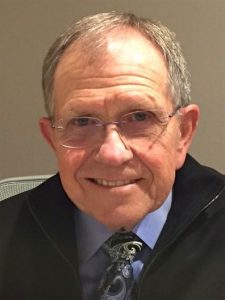Vision to Action: How to Change the System

By Jerry Covey, Managing Partner, JSC Consulting
The priorities of Alaska’s Education Challenge – Increasing Student Success, Cultivating Safety and Well-Being, and Supporting Responsible and Reflective Learners in every classroom, school, and district every day – can only be realized by ACTION.
VISION
The VISION set forth by the State Board of Education and Commissioner Johnson has provided the stimulus we need to improve our public education system. The opportunity before us now is to transform Alaska Education Challenge priorities to ACTION that translates to improved student success across the education system.
All Alaskans concerned with the delivery, governance, and funding of education believe in and want an excellent education for every student every day. It’s the reason we are teachers, administrators, and school board members who do our very best day-after-day, year-after-year to make it happen. Additionally, parents, higher education institutions, employers, and policymakers expect and count on us to produce graduates from our schools that are ready for work and further education and training.
THE CHALLENGE
But why is an excellent education for every student every day so hard to deliver? Why, in spite of our best efforts, do too many students, schools, and districts perform far below their potential and far below where they must perform to produce graduates who are ready to contribute to Alaska’s economy? And why, in the same structural and political environment, do some schools and districts excel?
To answer that question, many people look immediately at resources. For them, the low overall performance of our state education system is tied to a lack of funding: not enough money, not enough teachers, overwhelmed school boards, crumbling infrastructure, lack of programs, etc.
Sure, fewer resources are a challenge, and no one likes to cut their budget, reduce staff, or eliminate programs, but resources alone don’t explain the overall performance of our school system or the wide variance in performance we see among our school districts.
ACTION
The answer to improving our education system lies less in the amount of resources available, and more in how the resources are used. FOCUSING available resources on the highest educational priorities and COLLABORATION that unites and aligns teachers, administrators, and policy-makers to work together is what it takes to improve the system.
In high-performing school systems, individuals and groups do not agree on everything, but they do agree on what matters most for students and COLLABORATE to improve the education system.
QUALITY
States that have high performing education systems find ways to define and control quality across the system. Some control quality through government requirements such as state-controlled school curricula, higher pay for national board-certified teachers, access to apprenticeship and/or internship programs for high school students, appointed boards that control the quality of educator preparation programs, and other actions that impact the overall education system.
We Can Control Quality
Alaska, being a strong local-control state, does not have statewide structures that align education resources and control quality like those mentioned above. But that does not mean we cannot control the quality of education across the system. If we can agree on what matters most and act together, we can significantly improve the quality of education for all students.
Going it alone, working in silos, competing with each other, and a host of other historical behaviors by school districts, professional education organizations, Alaska Department of Education, University of Alaska Schools of Education, Alaska Legislature, and numerous other education groups have not produced results that any of us can be proud of. If the public education system is to improve, it will take all organizations pulling together to make and sustain changes that translate to greater student success.
LEADERSHIP IN ACTION
Commissioner Johnson is the first to say that our education system is not delivering what it should for far too many Alaskan students, families, employers, and post-secondary education institutions. He has said that if education organizations don’t work together in new ways, the education system will not change. To create change, Commissioner Johnson has convened leaders of several statewide education organizations and asked them to identify what’s holding our education system back and to collaborate on proposing changes that will improve it.
As I write this, leaders from NEA Alaska, Alaska Council of School Administrators, Association of Alaska School Boards, Southeast Regional Resource Center, University of Alaska, and Coalition for Education Equity are working with Commissioner Johnson to propose changes that will unite Alaskans around our public education system, strengthen our workforce, preserve local control of education, support the important role of education organizations, and do a better job of educating all students.
As state education leaders take bold steps to improve our education system, you should be asking what bold steps are being taken at your school district to significantly improve results. This is not the time for anyone who cares about education to be sitting in the bleachers. Roll-up-your-sleeves and pitch in to do your part to improve Alaska’s public education system. If we work together, we can make changes that we will all be proud of.
“Progress is impossible without change, and those who cannot change their minds cannot change anything.”
– George Bernard Shaw
# # #
The views expressed here are the writer’s and are not necessarily endorsed by the Association of Alaska School Boards. AASB welcomes diverse perspectives and civil discourse. To submit a Guest Column for consideration, see our Guest Column Guidelines and email your 400-1000 word submission HERE.
